Boiling Point: Can climate activists and labor unions find common ground?
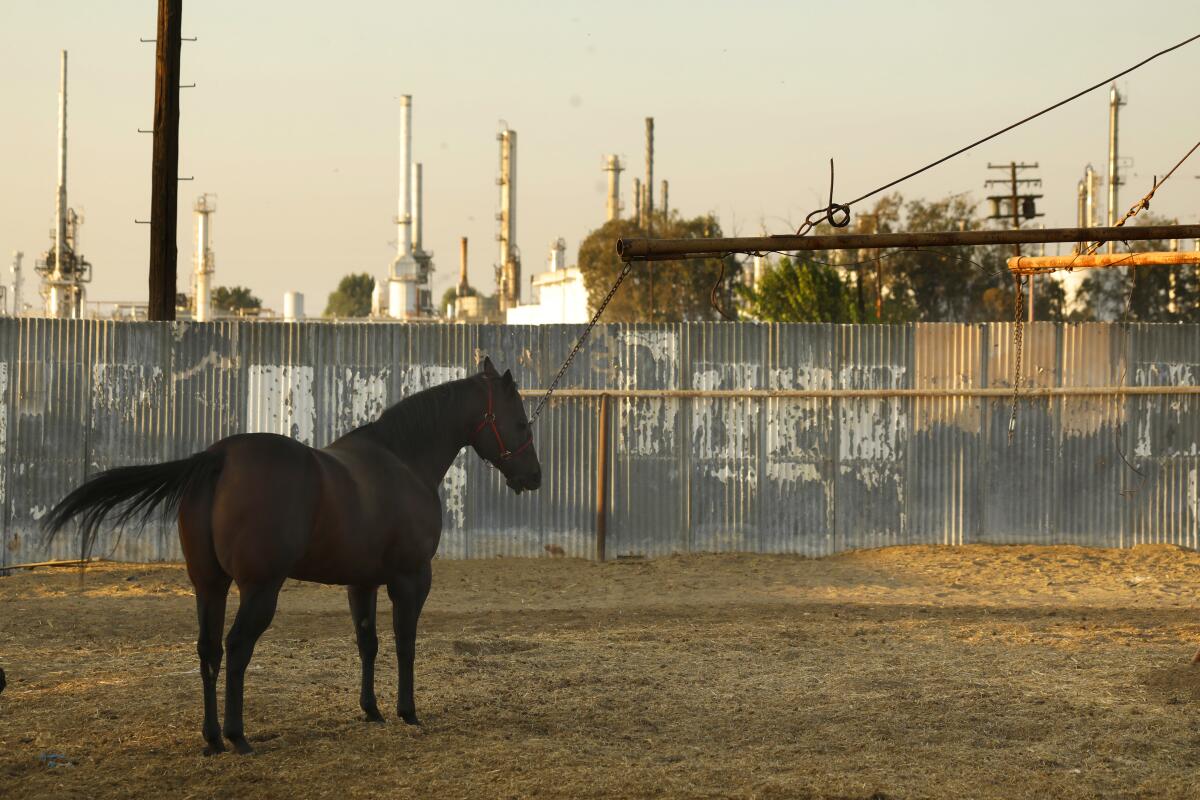
- Share via
Norman Rogers has worked at the West Coast’s largest oil refinery for nearly a quarter-century — and he’s ready to be part of the fossil fuel industry’s undoing.
Rogers is a vice president at United Steelworkers Local 675, whose thousands of members include Rogers and his colleagues at the Marathon oil refinery near the Los Angeles port. Local 675 is one of more than a dozen labor unions launching a new political coalition Tuesday that will lobby California to help fossil fuel workers transition to clean energy jobs — and push state officials to protect those workers from extreme heat and other dangers of global warming.
“The writing is on the wall about what’s going to happen next,” Rogers told me, referring to the inevitability of fossil fuel jobs going away. “We’re either going to be proactive about it, or we’re going to get run over by it.”
You're reading Boiling Point
Sammy Roth gets you up to speed on climate change, energy and the environment. Sign up to get it in your inbox twice a week.
You may occasionally receive promotional content from the Los Angeles Times.
The unions behind California Labor for Climate Jobs represent teachers, utility workers, farmworkers, janitors and more. They’re calling their initial policy platform the California Workers’ Climate Bill of Rights. It urges policymakers to invest in safety nets for oil and gas industry employees, including healthcare coverage and relocation, and to fund training programs that prepare those employees for similarly well-paying union jobs in climate-friendly fields.
The workers’ bill of rights also urges state officials to protect indoor and outdoor workers from deadly heat and lung-scarring wildfire smoke — threats that are getting worse and worse as temperatures rise with the burning of fossil fuels.
“We’re looking at a huge restructuring of the economy — probably the biggest since World War II,” said Kathryn Lybarger, a gardener at UC Berkeley and president of AFSCME Local 3299, which is also part of the new coalition. “We’ve got to make sure that as we shift to a low-carbon economy, that the jobs and those rights and protections are just as good.”
These types of proposals aren’t exactly new.
I wrote two years ago about an academic report — endorsed and funded by many of the same unions — finding that California could provide an equitable transition to fossil fuel workers at a cost of $470 million a year, or just 0.02% of the state’s expected gross domestic product. There have been increasingly loud calls for state lawmakers to safeguard workers from extreme heat.
But the new coalition arrives on the political landscape amid continued sparring over how to build a clean energy future that works for everyone.
As I’ve written in recent weeks, there’s no shortage of well-meaning people who understand the severity of the climate crisis but are convinced that certain climate solutions do more harm than good. Some critics say sprawling solar energy farms can disrupt sensitive desert landscapes, while others argue that rooftop solar incentives are driving up electricity rates.
The long-simmering tension between fossil fuel workers and environmental activists is another example of that sparring.
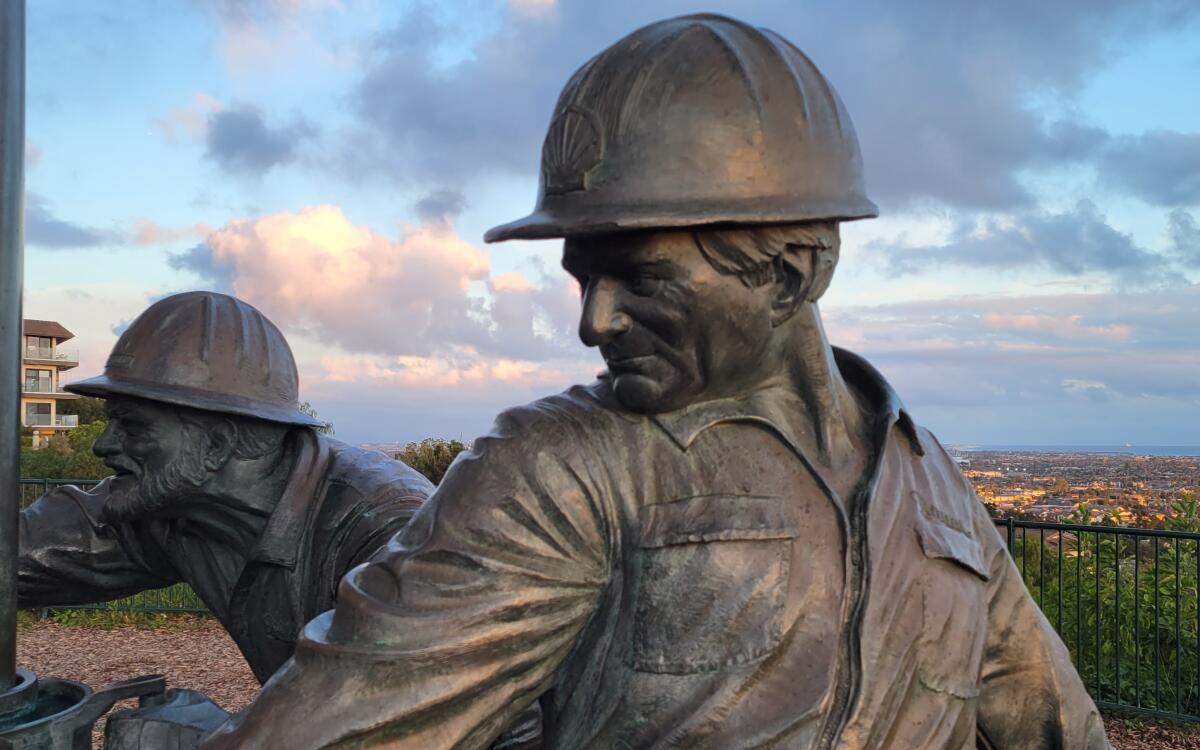
I saw it firsthand last week, while writing about billions of dollars in federal funding for clean-burning hydrogen fuel. Many union groups celebrated, seeing the money as a great tool for transitioning fossil fuel workers to well-paying jobs that match their skill sets. Many environmental justice activists, meanwhile, protested bitterly, seeing hydrogen as more often than not a false climate solution that will lead to continued air pollution in low-income communities of color.
I asked Ari Eisenstadt, energy equity manager for the California Environmental Justice Alliance, whether groups such as his need to be more sympathetic to fossil fuel workers. He acknowledged the importance for high-paying jobs but also noted that the low-income communities of color his group defends are “almost always made up of the same people as labor communities.”
What’s the point, he asked, of throwing those families an economic lifeline while continuing to foul their air?
“You can’t have a lifeline if you’re dead because you have cancer from air pollution,” he said.
Just about everyone agrees that climate activists and organized labor are better off working together — an approach exemplified by the national BlueGreen Alliance. Although the new California coalition is made up exclusively of unions, it’s taking a similarly inclusive approach: Keep fighting for good jobs, but pair that with a push for renewable energy. Make strong wages and a healthy climate part of the same campaign.
The challenge is working through issues where climate activists and labor unions fiercely disagree.
Take rooftop solar: When I asked Lybarger if there are clean energy jobs that the new coalition considers insufficiently well-paid or lacking in opportunity, she pointed to the largely non-union rooftop solar industry. It’s a longstanding point of contention that prompted labor unions to take part in a successful campaign to slash financial incentives for rooftop solar in California.
Like everything else in life that matters, resolving these tensions won’t be easy. Especially not at the rapid pace necessary to slash planet-warming pollution and prevent heat waves, fires and storms from getting far deadlier and more destructive.
But at least there are people trying. At least we can all play our small roles.
On that note, here’s what else is happening around the West:
TOP STORIES
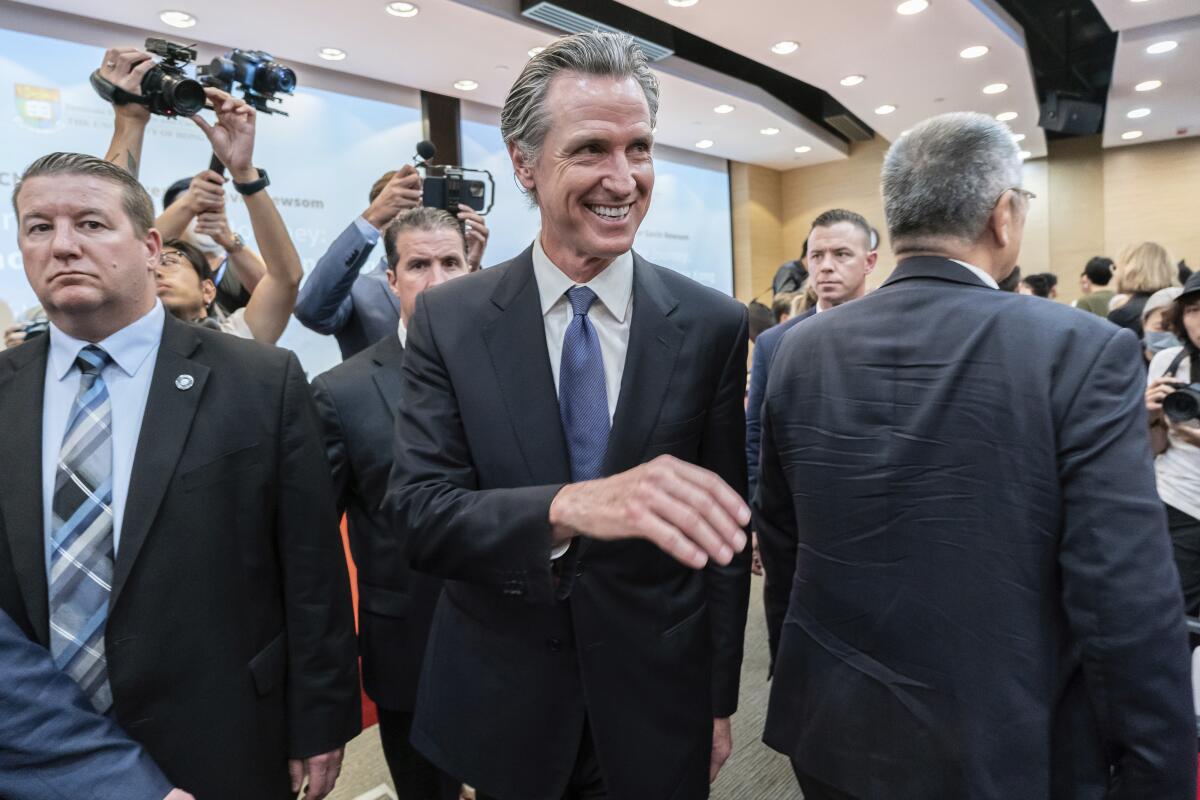
California Gov. Gavin Newsom is in China, where he says fostering stronger international cooperation on climate change is his top priority. My colleagues Hayley Smith, Tony Briscoe and Laurel Rosenhall previewed his itinerary, which includes visits to a Tesla factory and an electric bus depot. Rosenhall is on the ground in China, where she reported Monday that tensions between the world’s two most powerful nations — including U.S. concerns over human rights abuses in China’s Xinjiang region, an area rich in lithium for electric vehicle batteries — threatened to derail Newsom’s mission.
Get ready for a warm, wet winter in California and much of the rest of the country, following a crazy hot summer. Hayley Smith reported on some of the heat records set this year, and previewed what’s expected the next few months. The Times’ Javier Panzar, meanwhile, wrote about how to stay safe during the blistering temperatures that haven’t quite gone away yet. In more positive news, the L.A. Daily News’ Clara Harter wrote about a new California law that will make it easier and cheaper for schools to add shade structures.
The Biden administration is rolling out $3.5 billion for new electric lines, microgrids and safety upgrades to the power grid — the largest investment ever in the U.S. grid. Canary Media’s Jeff St. John has the details. Meanwhile, a new report finds it’s not just the U.S. that must rapidly expand its electric grid to fight climate change — many other nations don’t have enough long-distance power lines to carry energy from solar and wind farms to cities, the New York Times’ Brad Plumer reports.
WATER IN THE WEST
Newly uncovered documents show how hard Arizona and other Western states worked in the 1950s and 1960s to ensure that tribal nations didn’t have easy access to Colorado River water — a pattern that critics say continues today. Here’s the story from ProPublica’s Mark Olalde and High Country News’ Anna V. Smith, who write that the new documents reveal “startling similarities in the way states have rebuffed tribes’ attempts to access their water in the ensuing 70 years.” Also check out this story from the Salt Lake Tribune’s Leia Larsen, which offers a powerful example of how hard it can be for Western tribes to secure water — even when the rights were granted to them decades ago, in writing.
The initial round of public comments on new Colorado River operating guidelines has ended, and the seven states that draw from the river are as far apart as you might expect. KUNC’s Alex Hager wrote about what Arizona, California, Colorado, Nevada, New Mexico, Utah and Wyoming are asking for, and why it’s going to be so hard to bridge the divides. In other not-great news for saving water, there’s a growing body of research finding that fake grass can leach dangerous PFAS chemicals into water supplies, prompting California to pass a new law allowing cities to ban artificial turf, as CalMatters’ Shreya Agrawal reports.
A new study finds that many iconic Western glaciers aren’t really glaciers any more, with climate change at least partly to blame. If you were a fan of Colorado’s Taylor Glacier in Rocky Mountain National Park, Wyoming’s Petersen Glacier or Montana’s Grasshopper Glacier — I’m sorry to say they are not glaciers anymore. Details here from KUNC’s Emma VandenEinde.
THE ENERGY TRANSITION
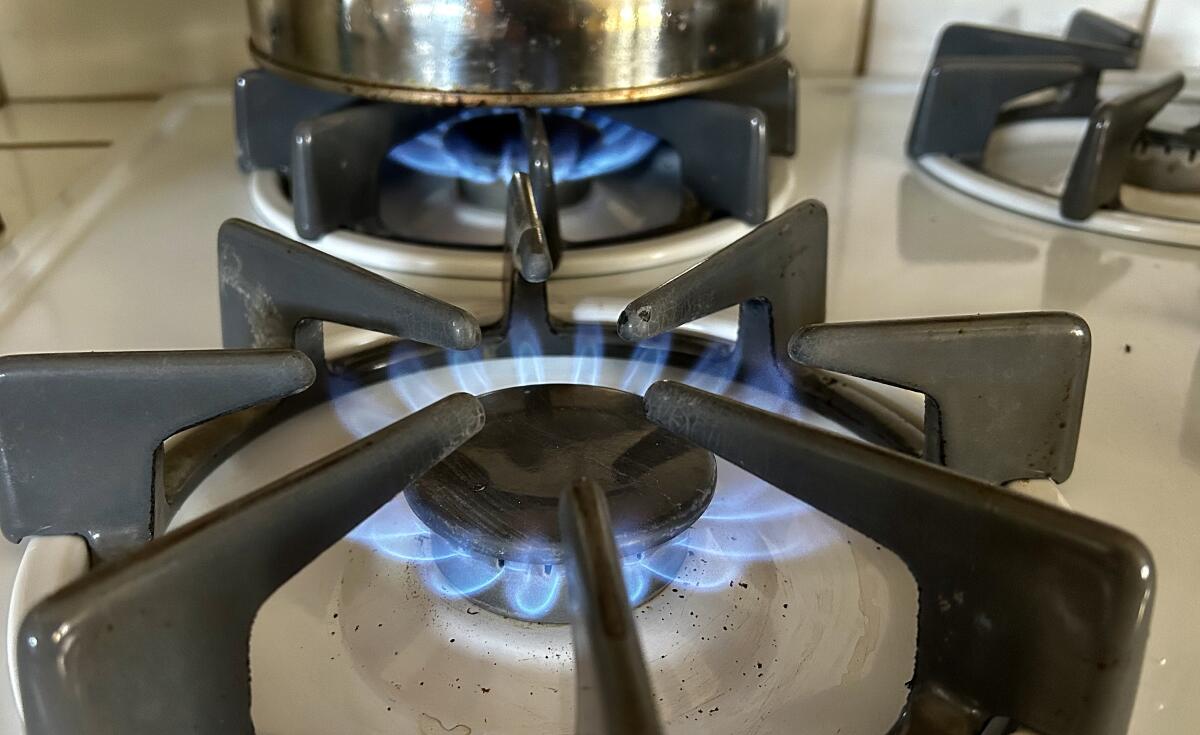
Newly uncovered documents shed light on the gas industry’s long history of using tobacco industry-style tactics to sow doubt about research linking gas stoves and respiratory illness. The industry’s campaign continues today, as NPR’s Jeff Brady reports in a revealing story that offers new ammunition to climate advocates pushing for induction stoves. In other gas industry news, the Associated Press’ Claire Rush reports that federal officials have approved a major gas pipeline expansion in the Pacific Northwest, claiming it won’t have significant climate impacts.
Colorado is following California’s lead on electric vehicles, requiring that 82% of car sales be electric by 2032. Details here from the Colorado Sun’s Michael Booth, who reports that climate activists wish state officials had gone further and adopted the 100%-by-2035 mandate now on the books in California. Speaking of Colorado, the Centennial State was part of a Mountain West coalition that — unlike California — didn’t receive any hydrogen funds from the Biden administration this month, as Sam Brasch reports for CPR News. Arizona and Nevada missed out on federal funds too, although leaders of their hydrogen initiative are still hopeful that projects will move forward, the Arizona Republic’s Joan Meiners reports.
As electricity prices rise across the U.S., rooftop solar is getting more attractive. Inside Climate News’ Dan Gearino reports that 5% of American households already have solar, and that number is poised to go up as utilities continue to raise rates. At the same time, growth could be slowed by California and other states slashing incentive payments for rooftop solar.
POLITICAL CLIMATE
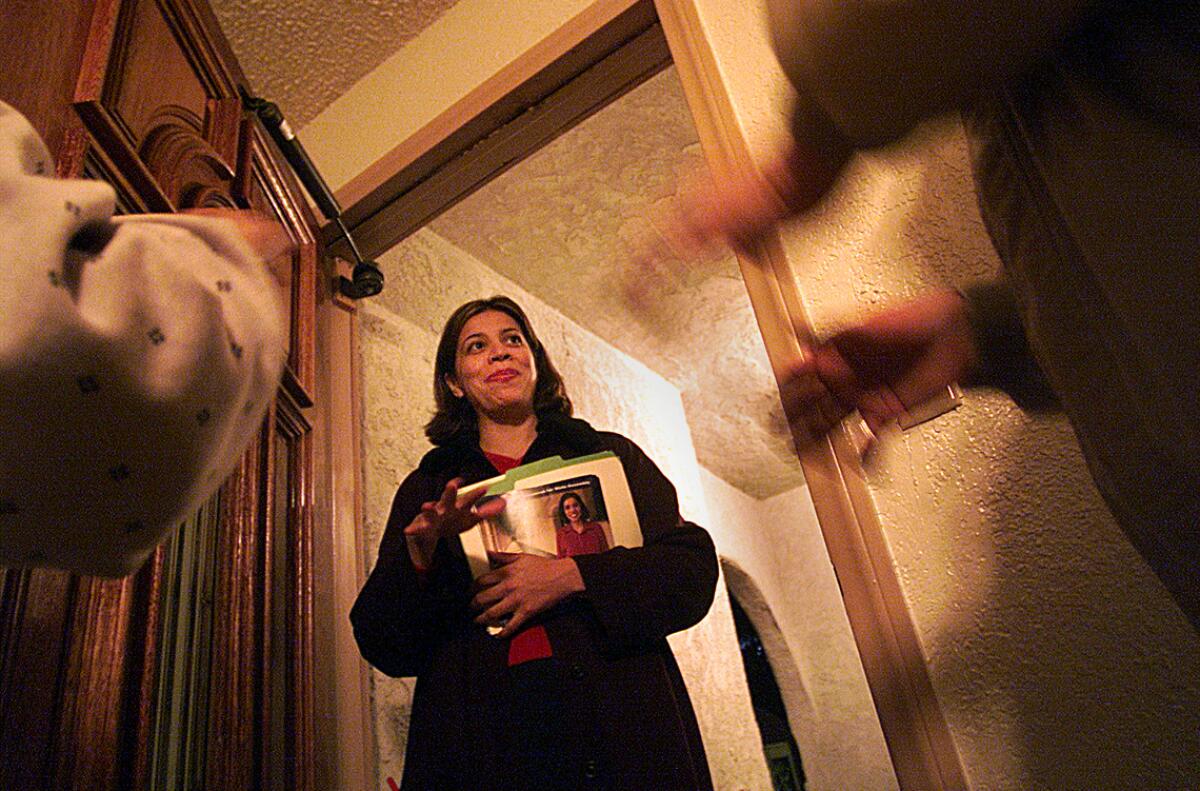
Cindy Montañez, a legendary San Fernando Valley environmental leader who worked for decades to clean up pollution in disadvantaged communities, died at 49 after a battle with cancer. My colleague Gustavo Arellano penned a moving obituary, describing Montañez’s many accomplishments as an activist, lawmaker and chief executive of TreePeople. “She was standing up as an environmentalist and owning that identity at times when young Latinos didn’t see themselves as environmentalists,” state Assemblymember Luz Rivas told Gustavo.
California may stop incentivizing the use of methane gas captured at dairy farms as a substitute for fossil gas piped to homes and businesses — but not until 2040. There’s a complicated backstory to the debate over using methane gas bubbling up from cow poop to heat our homes and fuel our stoves; suffice to say that the gas industry thinks it’s a great idea, and many environmental activists think it’s a terrible alternative to electric appliances. California officials seem to think the activists have a point, but they’re not planning to do anything about it especially quickly, CalMatters’ Alejandro Lazo reports.
The oil industry has a new Spanish-language ad campaign that targets Latinos across California, trying to persuade them that policies supporting electric cars and clean energy are making their lives more expensive. To learn about the campaign, my colleague Tony Barboza — a member of the The Times’ editorial board — spent two days with Argelia León, an official at the Western States Petroleum Assn., touring the predominantly Latino communities in the San Joaquin Valley where she grew up to hear firsthand how climate policies are affecting people. Tony’s conclusion: “This campaign is nothing more than propaganda to delay electrification policies, allowing the fossil fuel industry to profit for as long as possible.”
AROUND THE WEST
“How do you avoid becoming one of those places that people just love to death?” My colleague Jack Herrera has a fabulous story on small Western towns struggling to balance outdoor tourism with quality of life for locals, zooming in on the recent solar eclipse, which drew loads of tourists to Bluff, Utah, in the center of the eclipse’s path. Elsewhere on the Western landscape, Leah Campbell has a fascinating piece for Earth Island Journal on the lack of money for cleaning up abandoned mines on public lands in California — and the dangers those mines pose to thrill-seekers and firefighters.
A new study out of UC Davis finds that birds nesting in farmlands are more vulnerable to climate change-driven extreme heat than birds nesting in forests. Here’s the story from the Associated Press’ Melina Walling. The study was based on citizen science data (which is cool) and spells trouble for birds already threatened by global warming (which is less cool). In other wildlife news, The Times’ Karen Garcia reports that California has a new law designed to protect mountain lions and other animals from rat poison.
Wildfire smoke is a problem outside our homes — and inside them, too. A new study focused on the Mountain West finds that wildfire smoke can linger in our homes longer than previously thought, KUNC’s Emma VandenEinde reports.
ONE MORE THING
I just started Season 3 of “The Morning Show” on Apple TV+, and I was pleasantly surprised that the premiere included several shots of wind turbines rippling across the plains of Texas — which has built more wind power than any other state.
As I’ve written again and again: The more climate and clean energy stories on our screens, the better.
This story is the latest edition of Boiling Point, an email newsletter about climate change and the environment in California and the American West. You can sign up for Boiling Point here. And for more climate and environment news, follow @Sammy_Roth on Twitter.
Toward a more sustainable California
Get Boiling Point, our newsletter exploring climate change, energy and the environment, and become part of the conversation — and the solution.
You may occasionally receive promotional content from the Los Angeles Times.




